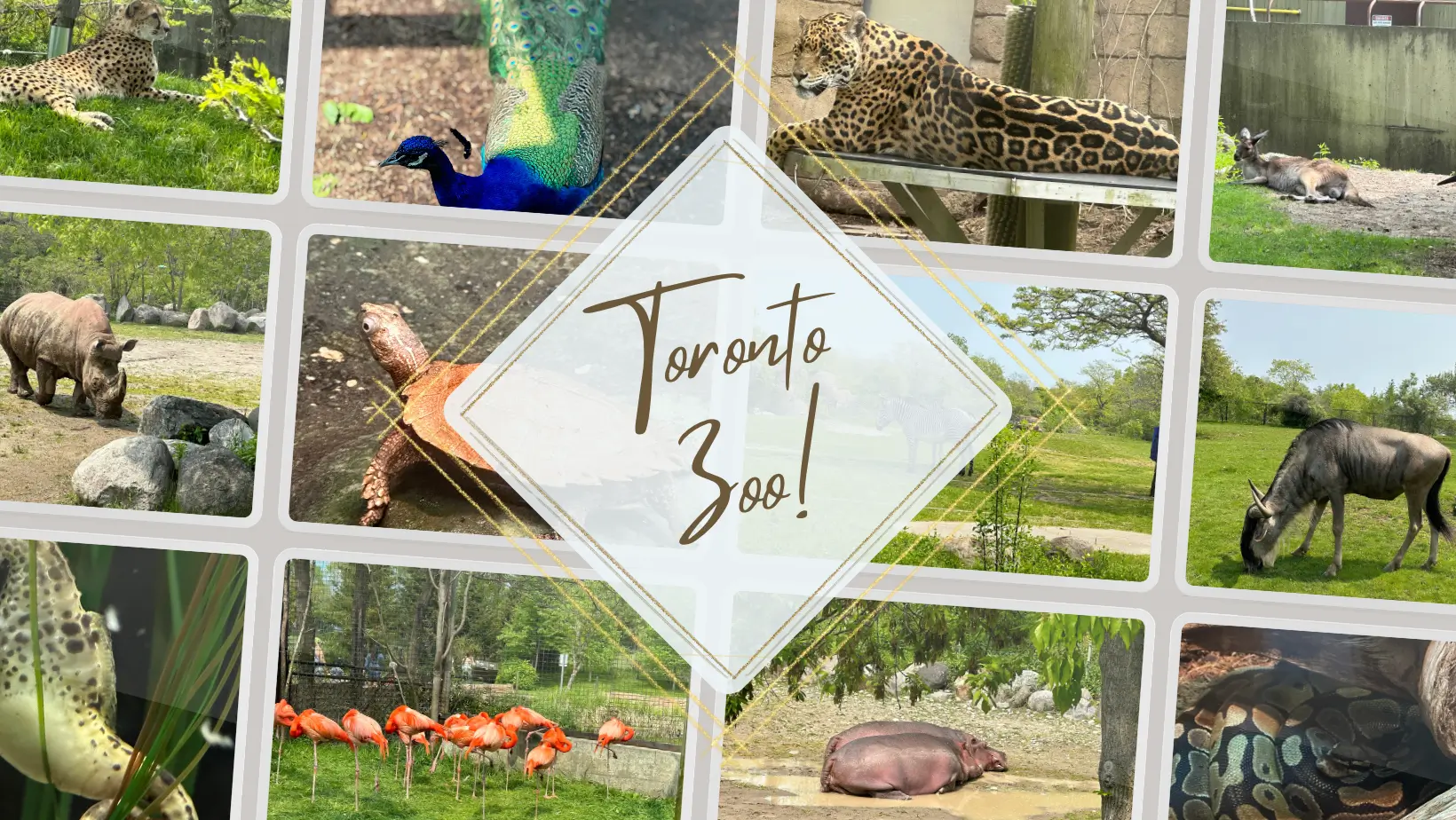Feb 16, 2024
Visiting the Toronto Zoo promises an enriching experience for wildlife enthusiasts of all ages. Tickets can be conveniently purchased online through the official Toronto Zoo website, allowing visitors to plan their excursions seamlessly. Ample parking facilities are available on-site for a hassle-free experience. The zoo hosts various shows and events, providing entertaining and educational opportunities for guests. To stay informed about show schedules and potential cancellations due to unforeseen circumstances, visitors are encouraged to check the official Toronto Zoo website or contact the zoo directly. Keep in mind you should check their website for animal updates and closures before visiting to avoid disappointment. Whether exploring diverse exhibits or enjoying interactive programs, a trip to the Toronto Zoo ensures a memorable day of discovery and conservation awareness.
Establishment and Size:
The Toronto Zoo opened on August 15, 1974. It is one of the largest zoos in the world, covering approximately 287 hectares (710 acres). The zoo was founded with the principles of conservation, education, and research at its core. It aimed to provide a habitat for animals that allowed them to live in conditions similar to their natural environments while also serving as a platform for public education and awareness about wildlife and conservation.
Exhibits and Attractions:
The Toronto Zoo is home to over 5,000 animals representing more than 450 species. It has a strong focus on conservation and is involved in various breeding and reintroduction programs for endangered species. The zoo is divided into several geographic zones representing different regions, such as the Indo-Malaya, Africa, Americas, Tundra Trek, Australasia, and the Canadian Domain. Additionally, various indoor exhibits, greenhouses, and behind-the-scenes facilities for administration and services exist. I recommend taking the little map they offer you at the entrance to help ensure you understand the layout. Alternatively, Toronto zoo has an online map that you can refer to.
1. Africa:
The Toronto Zoo’s Africa section features a diverse range of wildlife, including Western lowland gorillas, African elephants, and white lions. Visitors can explore the African Rainforest Pavilion, which replicates the lush rainforest habitat. The African Savanna exhibit showcases animals such as white rhinos and giraffes. The zoo actively participates in conservation initiatives to protect these species and their natural habitats. For more detailed information, you can visit the official Toronto Zoo website’s Africa section: Toronto Zoo – Africa.







2. Americas Pavilion:
The Toronto Zoo’s Americas section showcases a variety of wildlife from North and South America. Visitors can explore habitats ranging from the Arctic tundra to the rainforests of South America. The zoo actively engages in conservation efforts for species like polar bears and promotes awareness of the challenges faced by these animals. For more detailed information, you can visit the official Toronto Zoo website’s Americas section: Toronto Zoo – Americas.


3. Australasia Pavilion:
This pavilion showcases Australia’s unique wildlife, including kangaroos and wallabies. Visitors can observe these marsupials in environments reminiscent of their natural habitats.

4. Indo-Malaya Pavilion:
The Indo-Malaya Pavilion is home to Malayan tigers, an endangered species native to the tropical forests of Southeast Asia. You can also see tortoises, greater one-horned rhinos, clouded leopards and more. Orangutans: Visitors can witness the fascinating behaviours of orangutans, showcasing the great apes’ intelligence and adaptability.



5. Eurasia Wilds:
You can find Amur Tiger, Bactrian camel, Domestic yak, Mouflon, Przewalski’s horse, Red Panda, Snow leopard, Sumatran Tiger, West Caucasian tur among other species. Unfortunately, this section was closed when we visited so we did not get to explore it.
6. Tundra Trek:
The Tundra Trek at the Toronto Zoo offers visitors a captivating journey into the Arctic realm, featuring a compelling showcase of polar bears in a habitat that mimics their natural environment. This immersive exhibit provides insights into the challenges faced by these iconic species due to climate change and diminishing sea ice. In addition to polar bears, the Tundra Trek introduces visitors to other cold-climate wildlife, creating an educational experience focused on Arctic ecosystems and the importance of conservation efforts.



7. Canadian Domain:
This area represents the native wildlife of Canada, including animals like American Moose, Grizzly bear, Northern bald eagle, Raccoon, Trumpeter swan, and Wood bison showcasing the biodiversity found in the country.

8. Discovery Zone:
The Kids Discovery Zone allows children to interact with farm animals, fostering a connection with domesticated species and providing an educational experience.
Conservation Initiatives:
The Toronto Zoo actively participates in conservation efforts, both locally and internationally, to protect endangered species and their habitats. They are involved in research, breeding programs, and public education to promote awareness about wildlife conservation. The zoo provides educational programs for schools, camps, and the general public to promote understanding and appreciation of wildlife. Special events, workshops, and lectures are organized to engage visitors in conservation-related topics.
Sustainability Efforts:
The Toronto Zoo has implemented various sustainability initiatives, including waste reduction, energy efficiency, and eco-friendly practices to minimize its environmental impact.

Leave a Reply